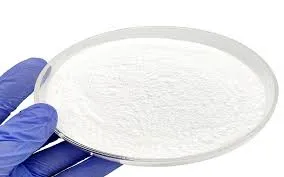Understanding Pentoxifylline Mechanism, Uses, and Benefits
Pentoxifylline is a medication that belongs to a class of drugs known as phosphodiesterase inhibitors. Primarily, it is used to improve blood flow in conditions associated with inadequate blood supply, particularly in patients suffering from peripheral vascular disease. This article sheds light on the mechanism of action, therapeutic uses, benefits, potential side effects, and considerations when using pentoxifylline.
Mechanism of Action
Pentoxifylline’s efficacy largely stems from its unique mechanism of action. It enhances erythrocyte (red blood cell) flexibility and reduces blood viscosity, thus improving microcirculation. The drug works by inhibiting phosphodiesterase, leading to an increase in cyclic AMP (cAMP) levels within cells. Elevated cAMP levels contribute to smooth muscle relaxation and vasodilation—widening blood vessels, and thereby enhancing blood flow. Improved blood circulation means that tissues receive more oxygen and nutrients, which is crucial for healing and recovery, especially in areas affected by ischemia (insufficient blood supply).
Therapeutic Uses
Pentoxifylline is most commonly used to treat intermittent claudication, a condition characterized by muscle pain in the legs due to inadequate blood flow during exercise. Patients with this condition often experience cramping and discomfort, which limits their physical activity. Pentoxifylline can help alleviate these symptoms, allowing patients to engage in light exercise, which is essential for overall health and recovery.
Additionally, pentoxifylline has been investigated for use in various other medical conditions, including
1. Chronic Venous Insufficiency (CVI) The drug may improve symptoms related to venous disorders by enhancing blood flow and reducing swelling. 2. Diabetes-related Complications There is evidence suggesting that pentoxifylline may help with diabetic foot ulcers and other complications arising from poor blood circulation.
medication pentoxifylline

4. Pulmonary Conditions Research is ongoing regarding the potential use of pentoxifylline in managing conditions like chronic obstructive pulmonary disease (COPD) where blood flow issues might be present.
Benefits of Pentoxifylline
One of the significant advantages of pentoxifylline is its ability to improve symptoms and quality of life for individuals with peripheral vascular diseases. By enhancing blood circulation, it can significantly reduce pain and discomfort associated with conditions such as intermittent claudication. Furthermore, since the drug promotes blood flow without causing significant changes in blood pressure, it is often more tolerable for patients with cardiovascular concerns.
Moreover, pentoxifylline may offer a multi-faceted approach to patient care. By improving microcirculation, it can aid in the healing process of various tissues and may reduce the risk of complications associated with chronic conditions, thereby improving overall patient outcomes.
Potential Side Effects
While pentoxifylline is generally well-tolerated, like all medications, it can cause side effects. Common side effects include gastrointestinal upset, nausea, and headaches. More severe reactions, although rare, can include dizziness, arrhythmias, or allergic reactions. It is crucial for healthcare providers to monitor patients for any adverse effects, especially in those taking multiple medications or those with pre-existing health conditions.
Considerations and Conclusion
Before starting pentoxifylline, it is essential for patients to discuss their medical history and current medications with their healthcare provider. The drug may not be suitable for individuals with certain conditions, such as severe renal impairment or active bleeding disorders.
In conclusion, pentoxifylline is a valuable therapy for improving blood flow in various medical conditions characterized by inadequate circulation. Its unique mechanism of action and potential benefits make it a topic of interest in ongoing medical research. Proper use of pentoxifylline, along with appropriate monitoring, can significantly enhance the quality of life for patients dealing with circulatory issues. As always, individualized patient care remains the cornerstone of effective treatment.

